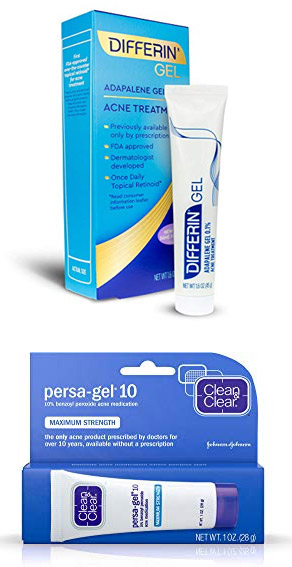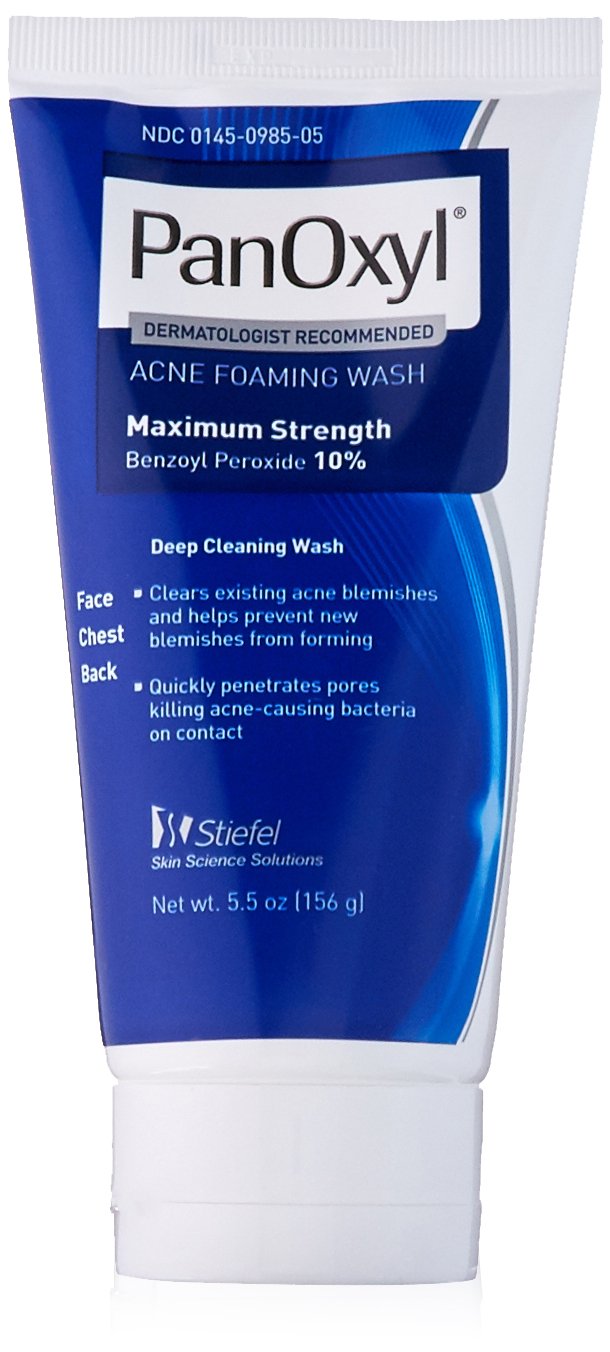Acne
What Would You Like to Know About?
Overview
Acne is the most common skin disorder in the United States. It most often affects teenagers, but is not limited to this population. Cases vary from newborns, with fleeting spots to adults with chronic breakouts.
Symptoms
Acne can appear as blackheads & whiteheads (comedones), red bumps or nodules, pimples (pustules) and sometimes deep cysts. It commonly occurs on the face, but can appear on other places on the body. Severity may range from a few small spots to multiple, deep cysts. In rare cases (acne fulminans), systemic signs such as fever may occur.
The more severe the acne, the greater the chance of leftover pigment change or scarring. Even when acne clears, redness (erythema) or dark spots (hyperpigmentation) can endure, but these changes tend to decrease with time. Deeper lesions and cysts, however, may result in scarring which can be permanent without treatment.
Cause
The cause of acne is complex. As with many skin problems, genetics play a role. For various reasons, pores become “sticky”, which leads to the accumulation of dead skin cells and trapped excess oil. Bacteria called C. acnes also play a role. The result is inflammation and acne lesions. Many women have an exacerbation of acne with monthly hormonal fluctuations.
Treatment
The treatment of acne depends on severity, location and type of acne lesions; patient characteristics such as age, sex, and skin type; skin sensitivity; and patient preference.
Acne prescription agents
Comedonal (blackhead& whitehead) lesions may be treated with topical agents such as benzoyl peroxide, retinoids (tretinoin, adapalene, tazarotene), azelaic acid, and superficial chemical peels like glycolic and salicylic acid. In cases of inflammation with visible red bumps or pustules, topical or oral antibiotics are often recommended.
More severe cases of acne may require systemic treatments. Oral antibiotics are frequently used to treat moderate to severe acne. However, long-term use of oral antibiotics is discouraged due to potential side effects and antibiotic resistance. Examples of oral antibiotic acne treatments include: tetracycline, doxycyline, minocycline, seracycline, erythromycin, trimethoprim/sulfamethoxazole, amoxicillin, etc.
A hormonal approach to acne treatment may benefit certain female patients. Oral contraceptive pills (OCP’s) may work by decreasing hormones which make oil glands active. Spironolactone, is another hormonal treatment which blocks the hormone receptor on oil glands.
Isotretinoin, commonly referred to by the former trade name Accutane, is an oral acne treatment that is typically reserved for severe cases of acne and acne that does not respond to oral antibiotics and/or flares whenever systemic antibiotics are stopped. While this treatment is highly effective, potential side effects limit its use. This medication is under control of a government mandated program in the U.S. to decrease pregnancy rates in women who take isotretinoin, as it can cause birth defects.
OTC Treatment Options
Mild Acne
Cleanse

Neutrogena Oil Free Acne Wash Foaming Facial Cleanser
Oily Skin
- Cetaphil Derma Control Oil Control Foam Wash
- La Roche Posay Effaclar Purifying Foaming Gel Face Wash for Oily Skin
- CeraVe Foaming Facial Cleanser for Normal to Oily Skin–has ceramides (helps protect skin barrier) and niacinamide (an anti-inflammatory)
- Panoxyl Creamy Wash (benzoyl peroxide)
- Aveeno Clear Complexion Foaming Cleanser (salicylic acid)
- Neutrogena Oil-Free Pink Grapefruit Acne Facial Cleanser (salicylic acid)
Sensitive Skin
- Cetaphil Gentle Skin Cleanser
- Clean & Clear Essential Foaming Face Wash for Sensitive Skin
Treat

Differin Gel (0.1% adapalene)
- La Roche-Posay Effaclar Adapalene Gel
- Clean & Clear Persa-Gel 10 Maximum Strength Acne Treatment (10% Benzoyl Peroxide)
- The Ordinary 10% Azelaic Acid Suspension
Block (AM)

Elta MD Clear SPF 46 (with or without tint)
- Cetaphil Oil Control Moisturizer SPF30
- CeraVe Ultra-Light Moisturizing Lotion SPF30 for normal to oily skin
- Neutrogena Oil Free Facial Moisturizer SPF 15
- Aveeno Positively Radiant Daily Moisturizer Sunscreen SPF 30
Moisturize (PM)

Neutrogena Hydro Boost
- CeraVe PM Facial Moisturizing Lotion
- Cetaphil Facial Night Cream
- Glycolix Elite Facial Cream Ultra Lite
- CeraVe cream Moisturizing Cream — for extra dry skin
Instructions
AM
PM
OTC Tips
Applying topical acne medications more than directed will not provide faster or better results, but may worsen skin irritation. Side effects of acne treatments like Differin, benzoyl peroxide, and azelaic acid are generally mild but may include dryness, redness, burning, itching , scaling, allergic rash and sun sensitivity. If necessary, moisturize with CeraVe cream after treatment. Frequency of application can be decreased to every other night and gradually increased if necessary.
Be aware that products like Persa-Gel which contain benzoyl peroxide can bleach fabric: clothing, towels, and bedding may be affected.
Moderate Acne
Cleanse

Neutrogena Oil Free Acne Wash Foaming Facial Cleanser
Oily Skin
- Cetaphil Derma Control Oil Control Foam Wash
- La Roche Posay Effaclar Purifying Foaming Gel Face Wash for Oily Skin
- CeraVe Foaming Facial Cleanser for Normal to Oily Skin–has ceramides (helps protect skin barrier) and niacinamide (an anti-inflammatory)
- Panoxyl Creamy Wash (benzoyl peroxide)
- Aveeno Clear Complexion Foaming Cleanser (salicylic acid)
- Neutrogena Oil-Free Pink Grapefruit Acne Facial Cleanser (salicyclic acid)
Sensitive Skin
- Cetaphil Gentle Skin Cleanser
- Clean & Clear Essential Foaming Face Wash for Sensitive Skin
Treat

Clean & Clear Persa-Gel 10 Maximum Strength Acne Treatment (10% Benzoyl Peroxide) (AM)
Differin Gel (0.1% adapalene) (PM)
- La Roche Posay Effaclar Duo ( BPO 5.5% micronized & Lipo-Hydroxy Acid (LHA)0.4%)
- The Ordinary 10% Azelaic Acid Suspension
- La Roche-Posay Effaclar Adapalene Gel
Block (AM)

Elta MD Clear SPF 46
(with or without tint)
- Cetaphil Oil Control Moisturizer SPF30
- CeraVe Ultra-Light Moisturizing Lotion SPF30 for normal to oily skin
- Neutrogena Oil Free Facial Moisturizer SPF 15
- Aveeno Positively Radiant Daily Moisturizer Sunscreen SPF 30
Moisturize (PM)

Neutrogena Hydro Boost
- CeraVe PM Facial Moisturizing Lotion
- Cetaphil Facial Night Cream
- Elta MD PM Therapy Facial Moisturizer
- CeraVe Moisturizing Cream–for extra dry skin
Instructions
AM
Cleanse with selected cleanser. Rinse. Pat dry. Cover the entire affected area with a thin layer of Clean & Clear Persa-Gel or alternative product. Excessive drying of the skin may occur. If bothersome dryness or peeling occurs, reduce application to every other day. If irritation or sensitivity develops, stop use and ask a doctor. Following this, moisturize & block with a moisturizer with SPF. Next, cosmetics may be applied.
PM
OTC Tips
Applying topical acne medications more than directed will not provide faster or better results, but may worsen skin irritation. Side effects of acne treatments like Differin and benzoyl peroxide are generally mild but may include dryness, redness, burning, itching , scaling, allergic rash and sun sensitivity. Frequency of application can be decreased to every other night and gradually increased if necessary.
Be aware that products like Persa-Gel which contain benzoyl peroxide can bleach fabric: clothing, towels, and bedding may be affected.
Body Acne
Cleanse

Panoxyl 10% Acne Foaming Wash (10% benzoyl peroxide)
- Differin Daily Deep Cleanser (10% benzoyl peroxide)
- Neutrogena Rapid Clear Stubborn Acne Cleanser (10% benzoyl peroxide)
- Neutrogena Oil Free Acne Wash
- Cetaphil Gentle Skin Cleanser-for sensitive skin
- Vanicream Z-Bar (2% zinc pyrithione bar)
Treat

Differin Gel (0.1%) (AM)
Clean & Clear Persa-Gel 10 Maximum Strength Acne Treatment (10% Benzoyl Peroxide)(PM)
- La Roche-Posay Effaclar Duo Combination BPO 5.5% micronized & Lipo-Hydroxy Acid (LHA)0.4%
- La Roche-Posay Effaclar Adapalene Gel
Instructions
AM
PM
If necessary, rinse skin or wash with a selected cleanser. Cover the entire affected area with a thin layer of Clean & Clear Persa-Gel or alternative. Excessive drying of the skin may occur. If bothersome dryness or peeling occurs, reduce application to every other day. If irritation or sensitivity develops, stop use and ask a doctor.
OTC Tips
Applying Differin more than directed will not provide faster or better results, but may worsen skin irritation. Also, use caution not to over apply Persa-Gel (benzoyl peroxide). Side effects of Differin & Persa-Gel are generally mild but may include dryness, redness, burning, itching, scaling, and sun sensitivity. If necessary, moisturize with a moisturizing lotion or cream after treatment. Frequency of application can be decreased to every other night and gradually increased if necessary. Be aware that products like Persa-Gel which contain benzoyl peroxide can bleach fabric: clothing, towels, and bedding may be affected.
Alternative & Complementary Treatments
Diet
Much has been written about the influence of diet on acne. There is some evidence that diets with a high glycemic index and consumption of cow’s milk may make acne worse. However, it is very unusual for a change in diet alone to effectively treat significant acne.
Others
Tea Tree Oil gels containing at least 5 percent tea tree oil may be as effective as lotions containing 5 percent benzoyl peroxide, although tea tree oil might work more slowly. Possible side effects include minor itching, burning, redness and dryness. Tea tree oil should be used only topically. The Body Shop Tea Tree Targeted Gel is one example of such a product.
OTC oral supplements with ingredients such as niacinamide and zinc are advocated by some dermatologists to combat acne. TreeActiv Skin Savior (nicotinamide, folic acid, pyridoxine, milk thistle, selenium & zinc) is one such OTC example. Nicomide ® (niacinamide, zinc, folic acid, copper, selenium & chromium) is available with prescription.
Many other holistic treatments have been tried, including Brewer’s yeast, bovine cartilage, maluka honey, light therapy and more.

